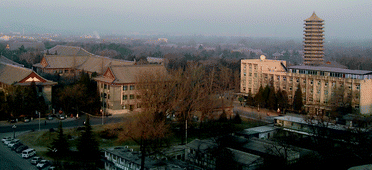Size fractionated particulate matter (PM) was collected in summer and winter from Beijing, China for the characterization of an expanded list of PAHs and evaluation of air pollution metrics. Summertime ΣPAHs on PM was 14.6 ± 29PM1.5, 0.88 ± 0.49PM1.5–7.2 and 0.29 ± 0.076PM7.2 ng m−3 air while wintertime concentrations were 493 ± 206PM1.5, 26.7 ± 14PM1.5–7.2 and 5.3 ± 2.5PM7.2 ng m−3 air. Greater than 90% of the carcinogenic PAHs were concentrated on PM1.5. Dibenzopyrene isomers made up a significant portion (∼30%) of the total carcinogenic PAH load during the winter. To our knowledge, this is the first report of dibenzopyrenes in the Beijing atmosphere and among the few studies that report these highly potent PAHs in ambient particulate matter. Lifetime risk calculations indicated that 1 out of 10 000 to over 6 out of 100 Beijing residents may have an increased risk of lung cancer due to PAH concentration. Over half of the lifetime risk was attributed to Σdibenzopyrenes. The World Health Organization and Chinese daily PM10 standard was exceeded on each day of the study, however, PAH limits were only exceeded during the winter. The outcomes of the air pollution metrics were highly dependent on the individual PAHs measured and seasonal variation.

You have access to this article
 Please wait while we load your content...
Something went wrong. Try again?
Please wait while we load your content...
Something went wrong. Try again?


 Please wait while we load your content...
Please wait while we load your content...